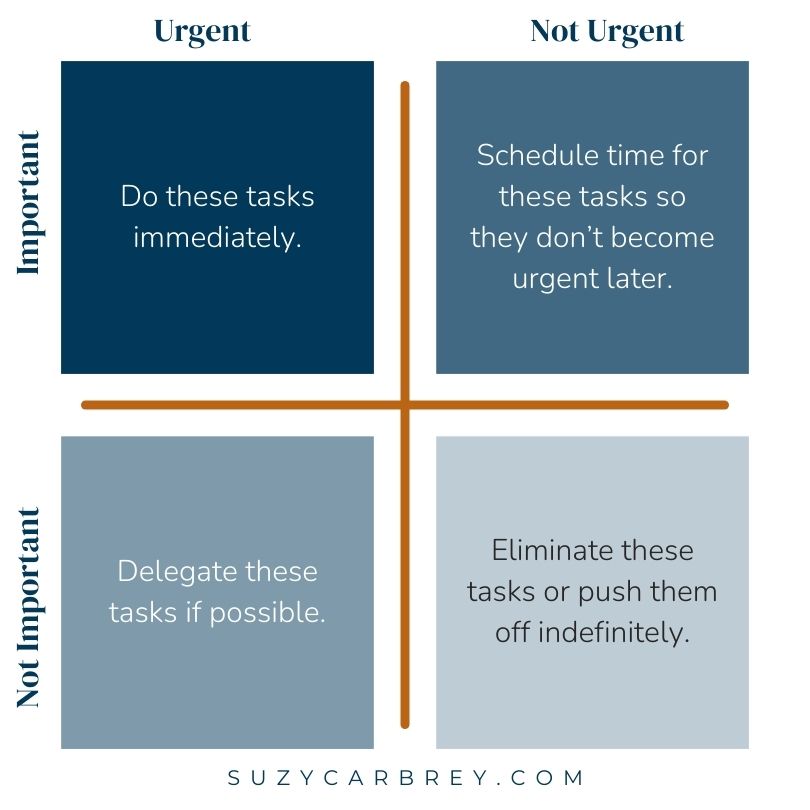Life with executive functioning challenges can often feel like juggling a thousand things at once, with each task demanding immediate attention. You might find yourself constantly putting out fires—handling unexpected events and interruptions that seem to throw your carefully crafted schedule out the window.
Whether you’re a parent balancing kids’ activities, a professional managing multiple projects, or both, the reality of an unpredictable schedule can make time and task management feel impossible. But there are ways to regain control, reduce stress, and handle the chaos more effectively. The key is shifting from a reactive mindset to a proactive one, implementing systems that allow flexibility, and regularly reflecting on your progress with realistic expectations.
Why Proactivity Matters
Being reactive means constantly responding to events as they come up, which can feel like you’re always in firefighting mode. While there will always be moments that require immediate attention, spending too much time in reaction mode can leave you feeling overwhelmed and exhausted. Proactivity, on the other hand, allows you to anticipate potential disruptions, plan for contingencies, and stay ahead of the curve, even when things go awry.
When your schedule is unpredictable, it’s crucial to build in strategies that make room for flexibility while still prioritizing your goals. Here are several systems and approaches that can help you stay on track, even in a world full of surprises.
1. Build in Buffer Time
One of the simplest and most effective strategies for managing a chaotic schedule is to build buffer time into your day. Rather than scheduling tasks back-to-back, give yourself small windows of extra time between activities.
This can account for unforeseen delays or “fires” that need to be put out. Buffer time also helps reduce the pressure to rush through tasks and can give you a moment to refocus if things don’t go as planned.
For example, if you know that your workday typically has unpredictable interruptions, allow an additional 15-20 minutes between meetings or tasks. If everything runs smoothly, you can use that time to relax or catch up on smaller tasks that often get overlooked.

2. Prioritize Using Flexible Systems
In an unpredictable schedule, rigid time-blocking or overly strict task lists can quickly lead to frustration. Instead, use flexible systems that prioritize your most important tasks while leaving room for adjustments.
The Eisenhower Matrix is a great tool for this. It divides tasks into four categories:

- Urgent and important: Do these tasks immediately.
- Important but not urgent: Schedule time for these tasks so they don’t become urgent later.
- Urgent but not important: Delegate these tasks if possible.
- Not urgent and not important: Eliminate these tasks or push them off indefinitely.
Using this framework helps you focus on what really matters when your schedule is unpredictable. You can adjust the timing of tasks based on changing priorities, ensuring you’re always focusing your energy on the most important tasks.
3. Time Blocking with Flexibility
While a rigid time-blocking system might not work for you, you can still use time blocks in a more flexible way. Instead of allocating specific hours for each task, try grouping similar tasks into larger time periods (like “morning work block” or “afternoon family time block”). This lets you have a general idea of when to focus on certain activities but gives you more wiggle room to shift things around when needed.
For example, instead of blocking off 9:00-9:30 am for a specific task, create a block from 9:00-11:00 am labeled as “work on important tasks.” If something unexpected happens, you can still use part of that block for urgent tasks and adjust the rest without throwing off your entire day.
4. Create a Task Flow with Labels and Tabs
A creative way to track your tasks without binding them to a specific time is to use a labeling and tab system. You can create a visual flow for tasks using tabs or sticky notes. This system works well because it allows you to see all the tasks that need to be done, track your progress, and move tasks around without feeling tied to a particular time slot.
Here’s how to implement it:
- Create a “To-Do” and “Done” Space: Set up two distinct spaces—one for tasks that need to be completed (“To-Do”) and one for tasks that are done (“Done”).
- Label Your Tasks: Write each task on a separate tab, sticky note, or card. Label each task clearly, focusing on the action required, not the time. For example, instead of writing “Write blog post at 2:00 pm,” label it “Write blog post.” This helps you focus on what needs to be done, without worrying about when it will happen.
- Move Tasks Over: As you complete tasks, move the corresponding tabs or notes from the “To-Do” space to the “Done” space. This provides a visible sense of accomplishment and allows you to see what’s been completed and what still needs attention.
- Rearrange as Needed: If unexpected events arise, it’s easy to move tabs around, prioritize them, or reassign them to different times. If new tasks pop up, add them to the “To-Do” space and adjust as necessary. This system lets you stay organized without being restricted by rigid time slots.

This system can be implemented with physical tabs or sticky notes on a board, or you can use a digital tool like Trello, which allows you to create task boards with draggable cards
5. Divide Your To-Do List Based on Time and Effort
When your schedule is unpredictable, it’s helpful to divide or color-code your to-do list into categories based on how much time or effort each task will require. This strategy ensures that you can always grab a task that fits into whatever time window unexpectedly opens up.
Here’s how to divide your to-do list:
- Quick Tasks: These tasks take 5-10 minutes to complete. Examples might include responding to an email, making a quick phone call, or tidying up a small area of your home. Label these tasks clearly and keep them easily accessible.
- Medium Tasks: These tasks take about 30-45 minutes to complete. They might include reading through a report, working on a project for work, or planning a meal for the week. These tasks are often the ones that you can adjust to fit in an unexpected time block.
- Long Tasks: These are the tasks that require a larger time commitment—perhaps an hour or more. They might include completing an in-depth work assignment, going through a detailed organizing session, or deep cleaning. These tasks may need to be moved around based on unexpected interruptions, but are essential for larger projects.
By having tasks categorized by time and effort, you can more easily grab a task depending on how much time you have. If you get a 10-minute window between meetings, you can quickly tackle a “Quick Task.” If you unexpectedly find yourself with an hour of uninterrupted time, you can focus on a “Long Task.”
6. Set Realistic Expectations and Reflect Regularly
One of the keys to managing time and tasks in an unpredictable environment is setting realistic expectations for yourself. It’s easy to get frustrated when things don’t go according to plan, but acknowledging that some disruptions are inevitable can help you approach your schedule with more patience and flexibility.
Set aside time for regular reflection and planning. At the end of each week, take 15-30 minutes to assess what went well, what didn’t, and what unexpected events came up. Reflect on how you handled those moments and how you can adjust your systems for next time. During this process, consider:
- Did your buffer time work, or do you need to build in more?
- Were you able to prioritize your tasks effectively despite interruptions?
- How can you adjust your systems to better accommodate surprise tasks or emergencies?
Adjusting your expectations and systems regularly allows you to stay aligned with your long-term goals, even when your immediate tasks feel chaotic.
7. Use External Supports
When your schedule is unpredictable, external supports like reminders, visual aids, or digital tools can help you stay on top of tasks. Use alarms, timers, or apps like Todoist, Google Calendar, or Trello to set reminders and track your progress. Visual systems, such as a color-coded planner or whiteboard, can also provide a quick overview of your schedule and tasks for the day. The goal is to minimize the mental load and allow external tools to help you manage your time more effectively.

8. Practice Mental Flexibility
Finally, developing mental flexibility is essential when working with an unpredictable schedule. It’s easy to fall into the trap of frustration when things don’t go as planned, but practicing mindfulness and staying open to change can help you bounce back more quickly. The more you practice staying calm and flexible, the easier it will become to pivot when unexpected events arise.
Conclusion
Managing time and tasks in an unpredictable world is a challenge, but by shifting from a reactive to a proactive mindset, using flexible systems, and maintaining realistic expectations, you can reduce stress and improve your productivity. Regular reflection will allow you to adjust your approach, making it easier to navigate the chaos and stay focused on your long-term goals. By incorporating these strategies, you’ll be better equipped to handle whatever life throws your way—fires included.
Remember, flexibility is key, and it’s okay if things don’t go as planned. What’s important is your ability to adjust and keep moving forward with intention and clarity.

Learn more with Online Coaching for Executive Functioning / ADHD
Ready to gain control and enhance your executive functioning? As an experienced and compassionate coach, I specialize in providing support for executive functioning and ADHD. To embark on your journey, please reach out to me at 708-264-2899 or email hello@suzycarbrey.com to schedule a FREE 20-minute discovery call consultation.
With a background as a speech-language pathologist, I have a strong foundation in executive functioning coaching. My graduate degree program in SLP placed a significant emphasis on cognition, including executive functions, and I have years of experience in medical rehabilitation, providing cognitive-communication therapy. Additionally, I have completed an ADHD Services Provider certification program, I am Solutions-Focused Brief Therapy Diamond Level 1 certified and I am trained in the Seeing My Time® executive functioning curriculum.
Experience the convenience and effectiveness of online coaching, backed by studies that demonstrate equal results to in-person services. Parents, professionals, and emerging adults love the convenience and privacy of receiving coaching from their own homes.
Whether you reside in Chicago, Milwaukee, Indianapolis, Kansas City, or anywhere else around the globe, I am here to assist you. Schedule your discovery call consultation today, and I eagerly anticipate the opportunity to work with you!
Please note that although I am a certified speech-language pathologist, all services Suzy Carbrey LLC provides are strictly coaching and do not involve clinical evaluation or treatment services. If you require a formal speech therapy evaluation and treatment, please inform me, and I can provide appropriate recommendations.

